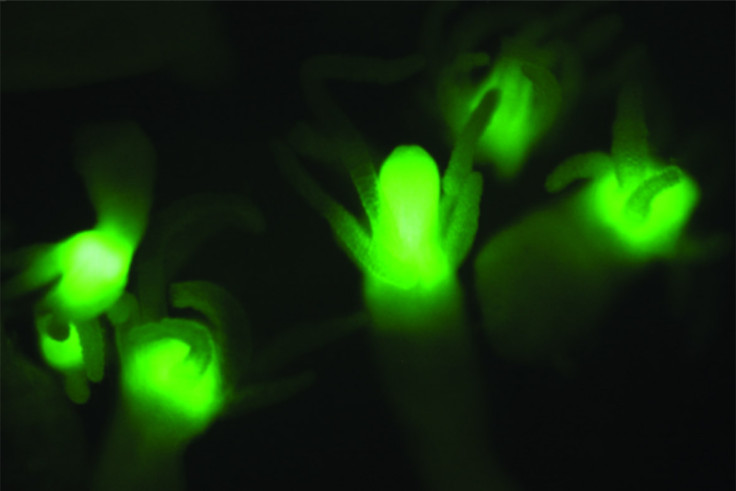Under the Pole: Divers explore depths of the Arctic to study sharks and glow-in-the-dark species
The expedition, known as Under The Pole III, will take scientists on a journey across the world's oceans.
In the depths of the ocean, between 60 and 150 metres below the surface, lies a vast and mysterious zone that has so far remained mostly unexplored by scientists – a so-called "Twilight Zone".
Working hand in hand with a team of experienced divers, researchers from around the world will now get a chance to study the elusive ecosystems that populate it, over the course of a three-year expedition known as Under The Pole III.
Led by two passionate divers and explorers, Ghislain Bardout and Emmanuelle Périé-Bardout, the expedition is driven by a desire to improve current knowledge of the planet's oceans and of the species that lurk in their depths.
The team is used to diving in extreme conditions, deep down in the freezing waters of the Arctic and Antarctic. With the help of innovative diving technologies, they aim to push back the boundaries of underwater exploration to advance scientific knowledge.
One of the innovations they hope to test in the coming months is a small "living capsule" – a kind of underwater shelter that will allow divers to rest during a dive and to spend more time investigating the ecosystems of the Twilight Zone.
From May 2017 to the end of 2020, Bardout, Périé-Bardout and their colleagues will take scientists aboard their boat to travel around the world, from the North Pole to the South Pole, to answer crucial scientific questions and to uncover hidden ecosystems.
The secrets of bioluminescent species
Throughout their journey in some of the world's most remote seas, one of the most exciting projects that divers and scientists will undertake will be to investigate two intriguing phenomenon – the bioluminescence and natural fluorescence of marine species.
Bioluminescence is a chemical process that involves the production and emission of light by a living organism. In contrast, natural fluorescence is a a physical process, which happens when an organism naturally emits light, after it has absorbed light.
Whether on land or in water, many animals appear to produce light or to become fluorescent under certain conditions. Some, like the glow-worm, have been well studied, but this is the exception rather than the rule. Very little is known about most of species, especially those living in the oceans. Exploring the Twilight Zone, especially in the Arctic, could potentially lead to the discovery of new, previously unseen species.

"Recently, scientists have shown that there is bioluminescence in the Arctic, under the ice and deep below the surface of the sea. However, these ecosystems remain poorly documented. We know nearly nothing about potential bioluminescent species inhabiting the Twilight Zone", scientist Marcel Koken, a bioluminescence specialist with the National Center for Scientific Research (France), told IBTimes UK. " Working with Under The Pole, I am hopeful I will encounter news species that I will then be able to study more in depth in the lab and then describe in scientific journals."
Koken hopes that he and the team will come across the elusive Greenland shark, to test whether the creature is bioluminescent.
Concrete medical applications
But Under The Pole is not just about satisfying the curiosity of experts by allowing them to discover new species. In recent years, research into the phenomena of bioluminescence and fluorescence has shown it had important and concrete applications.
Scientists have for instance succeeded in isolating a protein involved in the process of bioluminescence in the jellyfish Aequorea victoria.
Known as the Green Fluorescent Protein (GFP), it has proven extremely useful in medical research – to help researchers follow the trajectory of different compounds in the body, the progression of a disease in animal models, or the activity of brain cells.

A more recent study published in Nature has even shown that fluorescence could be used to track down buried landmines. Fluorescence indeed appears to have been generated when a genetically engineered bacteria is exposed to the explosives' vapour.
"It want to understand which species produce light in the ecosystems we will be surveying, and how they manage to do so. Are they doing so to defend themselves, to attract their prey or to hide? These are the kind of questions I would like to answer," Koken said. "But my hope is also to identify new proteins involved in the processes of bioluminescence and fluorescence that could then be used in medicine."
The expedition will also allow marine biologists to learn more about the kind of coral reefs that lie deep below the surface of the water as well as to document different species of sharks – bull sharks and hammerhead sharks in particular.
–
© Copyright IBTimes 2025. All rights reserved.






















